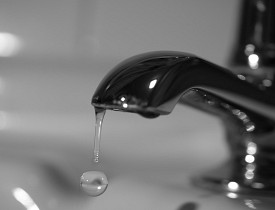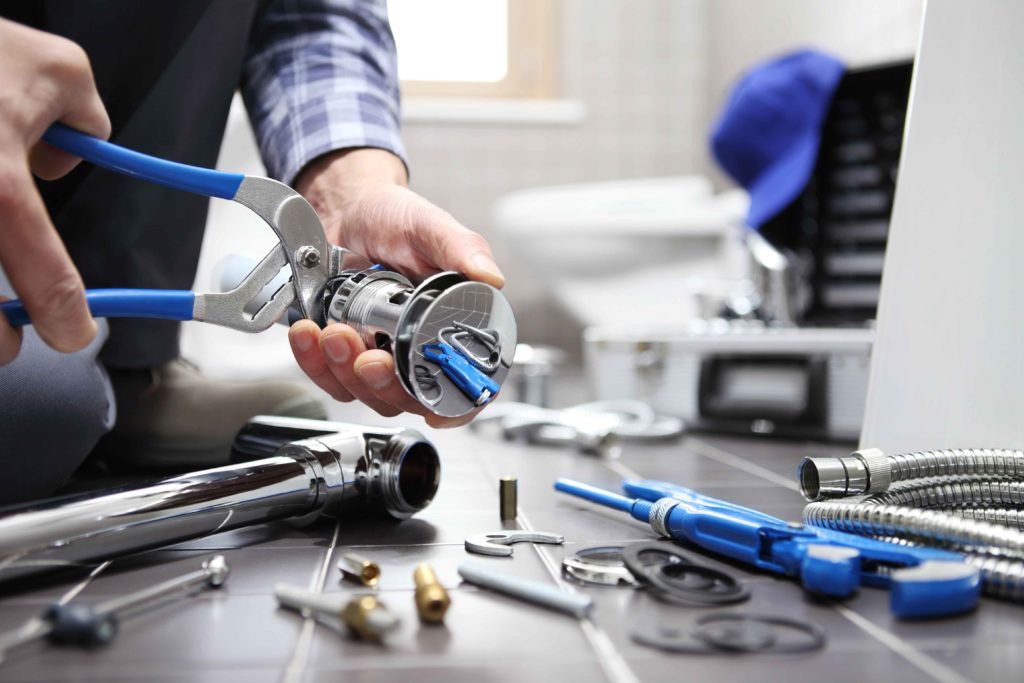Exploring the Significance of Fixing a Malfunctioning Faucet
Exploring the Significance of Fixing a Malfunctioning Faucet
Blog Article
What're your ideas regarding What Causes Leaky Faucets & How To Fix Them?

Leaking taps might feel like a minor trouble, yet their impact exceeds simply the annoyance of the noise. From drainage to sustaining unneeded financial costs and health and wellness dangers, overlooking a dripping faucet can result in different repercussions. In this post, we'll explore why it's critical to resolve this usual house concern immediately and properly.
Waste of Water
Environmental Influence
Trickling faucets contribute significantly to water waste. According to the Environmental Protection Agency (EPA), a solitary faucet trickling at one drip per second can waste greater than 3,000 gallons of water per year. This not just strains water sources but additionally impacts communities and wild animals dependent on them.
Step-by-Step Overview to Fixing a Dripping Faucet
Devices Required
Before trying to fix a leaking tap, gather the required devices, consisting of an adjustable wrench, screwdrivers, substitute components (such as washing machines or cartridges), and plumber's tape.
Common Faucet Issues and Their Solutions
Determine the kind of tap and the details issue causing the drip. Common issues include worn-out washers, corroded valve seats, or malfunctioning O-rings. Describe manufacturer instructions or online tutorials for detailed advice on fixings.
Financial Prices
Raised Water Costs
Past the environmental impact, dripping taps can pump up water expenses significantly. The gathered wastefulness in time equates right into greater energy expenditures, which could have been avoided with prompt repair services.
Potential Building Damages
Furthermore, prolonged trickling can cause damage to components and surfaces bordering the faucet. Water buildup can create staining, deterioration, and even architectural issues if left neglected, resulting in extra repair expenses.
Wellness Issues
Mold And Mildew and Mildew Growth
The consistent presence of dampness from a dripping faucet develops a perfect atmosphere for mold and mildew and mold development. These fungi not only jeopardize indoor air high quality yet additionally pose health threats, particularly for individuals with respiratory conditions or allergies.
Waterborne Diseases
Stagnant water in dripping faucets can become a breeding place for microorganisms and various other microorganisms, boosting the threat of waterborne conditions. Pollutants such as Legionella bacteria thrive in stationary water, possibly resulting in major diseases when consumed or breathed in.
DIY vs. Professional Fixing
Benefits and drawbacks of Do It Yourself Repair Service
While some may try to take care of a dripping tap themselves, DIY repair services come with their very own set of obstacles. Without proper expertise and tools, do it yourself efforts can intensify the concern or result in insufficient repair services, lengthening the problem.
Advantages of Working With a Professional Plumber
Employing a specialist plumber ensures that the underlying reason for the trickling tap is addressed efficiently. Plumbing technicians have the know-how and tools to detect and repair tap concerns efficiently, saving time and lessening the risk of more damage.
Environmental Responsibility
Private Contribution to Conservation
Taking obligation for repairing leaking taps aligns with more comprehensive efforts toward water conservation and ecological sustainability. Every individual's activities collectively make a substantial influence on maintaining valuable sources.
Lasting Living Practices
By focusing on punctual fixings and embracing water-saving practices, people contribute to sustainable living practices that benefit both present and future generations.
Preventive Measures
Routine Maintenance Tips
To avoid leaking taps, carry out regular maintenance such as cleaning up aerators, checking for leakages, and replacing damaged parts promptly. In addition, think about mounting water-saving gadgets or updating to much more efficient components.
Importance of Prompt Fixes
Addressing leaking taps as soon as they're seen avoids additional water wastage and prospective damages, inevitably saving both water and money over time.
Influence On Property Value
Understanding of Well-Maintained Building
Maintaining a building in good condition, consisting of resolving maintenance issues like leaking taps, improves its viewed worth and charm amongst possible customers or renters.
Impact on Resale Worth
Characteristics with properly maintained plumbing components, including taps, command greater resale worths in the realty market. Dealing with dripping faucets can contribute to a favorable impact throughout residential property inspections and settlements.
Conclusion
Dealing with a leaking faucet surpasses mere benefit; it's a necessary step toward preserving water, minimizing financial expenses, and guarding health and property. Whether with do it yourself repairs or professional assistance, taking action to take care of dripping taps is a little yet impactful method to advertise liable stewardship of resources and contribute to a healthier, more lasting future.
Most Common Reasons for a Leaky Faucet and How to Stop the Drip
Whether it’s your kitchen faucet leaking or a bathroom faucet leaking, one leaky faucet can waste anywhere from three to 30 gallons of water every single day. If the constant drip-drip-drip doesn’t get your attention, your water bill will. The good news is that, by following a few simple steps, chances are pretty good you can fix the problem yourself.
Why is it dripping?
Before you start taking things apart, let’s break down some of the most common causes of a leaky faucet.
Bad O-ring.
A cartridge is a valve that controls the flow of water into the faucet spout. On cartridge faucets there’s an O-ring—the little disc attached to the stem screw that holds the faucet handle in place. If it’s loose or worn-out, it can cause your sink handle to leak. Of course, the cartridge itself could be worn out. If that’s the case, make sure you replace it with the exact same kind.
Corroded valve seat.
The valve seat connects the faucet and the spout. If the leak seems to be coming from the spout, it might be because a buildup of water sediment has corroded the valve seat.
Worn-out washers or seals.
A leaky spout could be caused by a bad washer that rests against the valve seat. It’s just a matter of time before friction takes its toll. It could also be the wrong size washer or one that’s been installed incorrectly. Water sediments can also corrode inlet and outlet seals.
Water pressure.
If the faucet only drips now and then, or when you turn the handles a certain way, you should probably check your home’s water pressure.
Loose or broken parts.
The adjusting ring and packing nuts in the stream screw can become loose over time, causing your sink handle to leak. Try tightening or replacing the packing nut. If the leak is coming from the pipes underneath the sink, you probably have a broken pipe or fitting. If that’s the case, you should definitely call a plumber.
Know your faucet.
Faucets come in a variety of types. Each one has its own assembly—and its own possible causes of leaks. Learning about the four most common kinds of faucets will help you know how to take them apart and make any repairs.
How to stop a leaky faucet
Fixing that leaky faucet doesn’t have to take a lot of time, money, or expertise. It’s usually a simple matter of replacing a worn-out washer or gasket, a loose O ring, or another part. Chances are really good you can do this yourself if you follow these simple steps.
Shut off the water.
Before you tackle the faucet, cut off the water supply to the sink. There should be one valve for hot and one for cold. Hand-turn them clockwise with your hands till they close. If there are no valves under the sink, head to the basement and shut off the main water supply to the house. Then turn on the faucet until it empties out the water that’s still in the line and you’re ready to start. It’s a good idea to cover the sink drain with a plug or a rag so you don’t lose any small pieces and parts while you’re working.

Do you like more info about Leaky Faucets: Why They Happen & What to Do About Them? Give a comment below. We will be happy to find out your opinion about this write-up. In hopes that you come back again soon. Loved our piece? Please share it. Let another person locate it. Kudos for your time. Revisit us soon.
Report this page